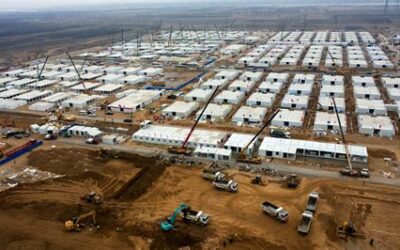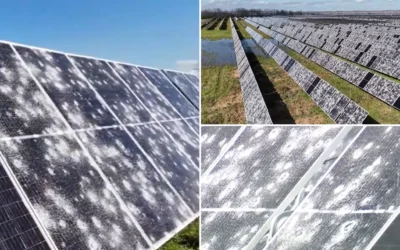Electric vehicles are the Net Zero Zealots’ nightmare
The Net Zero Zealots’ electric vehicle dreams are a disaster. The minerals used in the electric batteries are not easily recyclable or disposable and the power required to support the mass use of electric vehicles will require massive amounts of new power generation. The massive and reliable power required cannot be supplied by “renewable energy.” It would need to be provided by more burning more coal, for example. It gets worse.
Charging too many electric vehicles at one time would lead to transformer overloading and power failures. In the USA, for example, it would only take a few hundred electric vehicles charging simultaneously to burn out the local substation transformer in a small Midwest town.
Let’s not lose touch…Your Government and Big Tech are actively trying to censor the information reported by The Exposé to serve their own needs. Subscribe now to make sure you receive the latest uncensored news in your inbox…
Electric Vehicles Are an Ideologically Driven Economic Misadventure
By Jerome Corsi, republished from American Thinker
As more motorists own electric vehicles (“EVs”) and experience problems operating them, evidence shows that the movement to abandon gas-powered vehicles is ideologically motivated and unsupported by rational economic calculation.
In January 2023, four Wyoming state senators and two representatives introduced Senate Joint Resolution No. SJ004 to ban the sale of EVs in Wyoming by 2035. The proposed legislation stressed that “Wyoming’s vast stretches of highway, coupled with a lack of electric vehicle charging infrastructure, make the widespread use of electric vehicles impracticable for the state.” The proposed legislation also noted that “the batteries used in electric vehicles contain critical minerals whose domestic supply is limited and at risk of disruption.”
Moreover, the Senate Joint Resolution explained that “the critical minerals used in electric batteries are not easily recyclable or disposable, meaning that landfills in Wyoming and elsewhere will be required to develop practices to dispose of these minerals in a safe and responsible manner.” Finally, the legislation was premised on the reality that “the expansion of electric vehicle charging stations in Wyoming and throughout the country necessary to support more electric vehicles will require massive amounts of new power generation to sustain the misadventure of electric vehicles.”
Over 2 million EVs have been sold in the United States, although EVs remain less than 1 per cent of all vehicles on the road. On average, EVs cost $10,108 more than a standard vehicle. At the end of 2022, entry-level EVs cost customers between $20,000 and $40,000. In 2023, ongoing inflationary price increases, supply chain constraints, deteriorating labour conditions in major manufacturing regions, and component shortages will drive up EV prices. Statistica.com predicts EV prices will jump by another 37 per cent in 2023, driving the average cost of an EV up to more than $69,000 by the second half of the year.
Le Xie, PhD, a professor at Texas A&M University and a research affiliate at the MIT Laboratory for Information and Decision Systems, and his three academic colleagues co-authored a 2021 scientific analysis entitled “Toward carbon-neutral electricity and mobility: Is the grid infrastructure ready?” The authors concluded that one of the significant barriers to relying upon EVs to spearhead a move to decarbonise motor vehicles is that the existing electric grid infrastructure in the United States is not ready for the scale and speed of the portfolio transformation desired by the global warming community’s demand for achieving Net Zero Emissions (“NZE”) of carbon dioxide (CO2) by 2050.
Le Xie and his colleagues noted the “increasing evidence on the impact of uncoordinated electric vehicle charging on the electric distribution grid such as transformer overloading at a modest level of EV penetration. In an article published in The Hill on July 9, 2021, Le Xie and his colleagues asked, “How many electric vehicles charging at the same time would have blown up your local substation transformer?” They answered that it would only take a few hundred EVs charging simultaneously to burn out the local substation transformer in a small Midwest town. In their academic article, Le Xie and his colleagues explained the problem as follows:
With aggressive vehicle electrification goals, there will be a lack of hosting capacity of today’s distribution networks in handling massive distributed energy resources and EVs. Economic incentives and smart scheduling could offset the peak-to-valley ratio; however, even in the most optimistic case (i.e., a flattened total load curve), the limit of the substation transformers will still likely be exceeded.
Jake Fogleman, a policy analyst at the Independence Institute’s Centre for Energy and Environment, highlights another factor limiting EV expansion. NZE enthusiasts presume EVs contribute to decarbonisation primarily because battery-powered electricity emits no CO2. The problem is that the electricity needed to recharge EV batteries is generated primarily by burning hydrocarbon fuels. In an article posted on 3 January 2023, Fogleman referred to the German word Dunkelflaute, which he translated as “dark doldrums,” a term he noted describes a weather pattern of low wind and limited sunlight that makes generating electricity from renewable fuels nearly impossible. He wrote:
The event is relatively common in northern and western Europe during the winter months – hence the German name – and just last month it led to a devastating spike in [natural] gas prices in the UK while forcing Germany to supply nearly half its electricity needs from coal….
In a day-by-day analysis of Colorado’s generation of electricity, Fogleman noted that between 30 December 2022 and 2 January 2023 “Colorado’s wind fleet (with its roughly 4,500 MW of installed capacity) went from producing 2,000 MW of electricity down to the negatives on multiple occasions,” while solar generation, “similarly flatlined on 2 January when overcast skies arrived in the state.”
Fogleman commented that this weather scenario involving an extended period of low wind and minimal sunshine strains Colorado’s electrical grid to a point that, as the Colorado Public Utilities Commission has warned in a report published late last year, it poses a “significant threat” to future grid reliability. If the environmental benefit of electric cars depends upon the electricity being generated by renewables, states like Colorado may face an insurmountable barrier in that wind and sunlight are unreliable sources of energy in winter months.
Germany’s Welt noted that:
Klaus Müller, the president of the German Federal Network Agency [the bureaucracy regulating gas and electricity], warned that the growing number of private electric car charging stations and electric-powered pumps could overload the power grid in Germany. “If very large numbers of new heat pumps and stations continue to be installed, then we’ll have to worry about overload problems and local power failures…if we do not act….”
On 1 September 2022, one week after California approved a bold plan to ban the sale of gasoline cars by 2035, California underwent a heat wave. The extreme weather that prompted environmentalists to ban gas vehicles ironically caused the California Independent System Operator, the group managing the state’s power grid, to ask EV owners not to charge their vehicles during peak hours.
Though not deterring global warming hysterics, EV customer complaints are mounting. A Tesla owner posted a video on TikTok complaining that he was stranded at a Supercharger station on Christmas Eve because the cold weather paralysed the EV battery. A British owner of a £65,000 [$80,457] EV lamented that the vehicle spent months at a time in the repair shop “on account of innumerable electrical calamities,” and two of three roadside chargers are “broken or busy at any one time.”
Yet, speaking at the World Economic Forum in Davos, Switzerland, on 17 January 2023, Faith Birol, the executive director of the International Energy Agency (“IEA”), predicted that by 2030, half of all cars sold in Europe, the US, and China, the three largest car markets for EVs, will be EVs. In her enthusiasm, Birol ignored the IEA’s Global EV Outlook 2022 that warned mineral constraints loom even as EV sales break records. With China now processing most EV battery metal, battery supply chains face bottlenecks and lack diversification.
About the Author
Since 2004, Jerome R. Corsi has published 25 books on economics, history, and politics, including two #1 New York Times bestsellers. In 1972, he received his PhD from the Department of Government at Harvard University. He currently resides in New Jersey with his family. His current book, ‘The Truth About Energy, Global Warming, and Climate Change: Exposing Climate Lies in an Age of Disinformation’, was published on 28 June 2022. Dr. Corsi’s new website, DrJeromeCorsi.com, is now on the Internet in its first development phase.

Subscribe now to make sure you receive the latest uncensored news in your inbox…









0 Comments